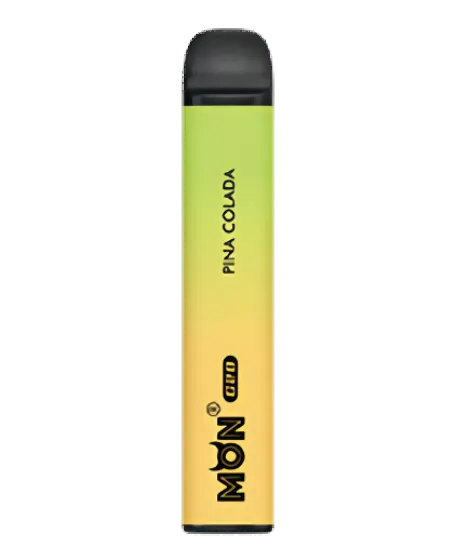1. What is Nicotine?
First, let’s understand what nicotine is. Nicotine is a chemical compound primarily found in plants of the Solanaceae family, particularly in tobacco. However, nicotine isn’t limited to cigarettes; it’s also present in some everyday foods like tomatoes, potatoes, and eggplants, albeit in lower concentrations. This means that we ingest small amounts of nicotine in our daily diets.
2. The History of Nicotine
Nicotine was initially used as a psychoactive plant by Native Americans and later introduced to Europe, where it became widely used. The name “nicotine” originates from Jean Nicot de Villemain, a French diplomat who introduced tobacco to France in the 16th century and advocated for its medicinal value. This name remains closely associated with nicotine to this day.

3. Why is Nicotine Addictive?
Nicotine, a complex and intriguing substance, exhibits a dual nature. On one hand, it has garnered attention for its potential anti-aging effects, as discussed earlier. However, on the other hand, nicotine is notorious for its addictive properties, which we will delve into in this section
Nicotine’s ability to stimulate the release of dopamine in the brain is a key factor behind its addictiveness. Dopamine is a neurotransmitter associated with pleasure and satisfaction, and when nicotine triggers its release, it creates a potent “reward system” within the brain. Smokers come to associate the act of smoking with this pleasurable sensation, reinforcing the behavior.
This psychological dependence on nicotine-induced pleasure is at the core of addiction. Over time, individuals may find themselves craving nicotine to experience those moments of pleasure, and this craving can lead to habitual and compulsive smoking behaviors.
It’s essential to recognize that while nicotine may offer potential benefits in anti-aging issues, it also poses a significant risk of addiction. Therefore, any consideration of using nicotine for its potential anti-aging effects must be approached with great caution, taking into account the complex interplay between its benefits and the risks associated with addiction.
4. Nicotine in E-cigarettes
E-cigarettes are devices designed to simulate the traditional cigarette experience but use e-liquid to heat and release nicotine. Compared to traditional cigarettes, e-cigarettes are considered safer because they emit water vapor instead of smoke.
However, nicotine in e-cigarettes still has a range of both positive and negative effects:
Positive Effects and Benefits:
- Aid in Smoking Cessation
E-cigarettes can serve as an alternative to traditional cigarettes, helping smokers gradually reduce nicotine intake and eventually quit smoking.
- Reduced Secondhand Smoke Exposure
E-cigarette emissions, being water vapor, pose fewer risks to bystanders compared to traditional cigarette smoke, reducing the risk of secondhand smoke exposure.
- Personalized Nicotine Intake
E-cigarettes allow smokers to choose nicotine concentrations, helping them better control their nicotine intake.
- Potential for Preventing Parkinson’s and Alzheimer’s
Some studies suggest that nicotine may help prevent Parkinson’s and Alzheimer’s diseases. Research in animal models has shown that nicotine can protect neurons, improve motor skills, and enhance cognitive abilities, reducing the risk of these diseases. However, further research is needed to determine its applicability and safety in humans.
- Enhanced Attention and Memory
Nicotine can enhance regions of the brain associated with alertness, visual attention, and motor activation, leading to increased attention, memory, alertness, and creativity. This positive effect may explain why some people feel more alert and focused after smoking, especially when dealing with stress and fatigue.
- Alleviation of ADHD Symptoms
For individuals with attention deficit hyperactivity disorder (ADHD), nicotine is known to reduce the severity of symptoms, improving attention, energy, accuracy, and reaction time. Additionally, for ADHD patients trying to quit smoking and experiencing withdrawal symptoms, nicotine can help alleviate mild tension.

Negative Effects and Drawbacks:
- Addictiveness
Nicotine is highly addictive, whether used in traditional cigarettes or e-cigarettes, leading to both physiological and psychological dependence. This addiction makes it challenging for smokers to quit nicotine, potentially resulting in prolonged e-cigarette use.
- Health Risks
Long-term e-cigarette use may pose health risks, particularly to the respiratory system. Although e-cigarettes are relatively less harmful than traditional cigarettes, it does not mean they are entirely risk-free. Nicotine itself may also have negative effects on the cardiovascular system.
- Vascular Risks
Prolonged use of nicotine in e-cigarettes may have adverse effects on the cardiovascular system, including an increased risk of heart disease and high blood pressure. While e-cigarettes may be safer than traditional cigarettes, they are not entirely without risk.
- Respiratory Issues
Some studies suggest that e-cigarette users may face respiratory problems such as bronchitis, throat irritation, and bronchospasms. These issues may be due to chemicals in e-cigarettes or nicotine itself.
5. The Role of Nicotine Salt in E-cigarettes

Nicotine Salt is an innovative technology in the field of e-cigarettes, leading a new trend in the industry. Compared to traditional freebase nicotine, nicotine salt has gained popularity due to its unique characteristics and effects in e-cigarettes. In this article, we will further explore the role of nicotine salt in e-cigarettes and its impact on smokers and e-cigarette users.
Enhanced Nicotine Absorption Efficiency
Nicotine salt has a higher bioavailability compared to traditional freebase nicotine. This means that smokers can absorb nicotine more efficiently without the need to inhale large amounts of smoke. This feature makes e-cigarettes more efficient in satisfying nicotine cravings, reducing the number of times smokers need to inhale significant amounts of smoke, thus lowering potential health risks.
Reduced Risk of Child Ingestion
The taste of nicotine salt is relatively less recognizable by children, reducing the risk of accidental ingestion. Traditional nicotine may have a strong spicy taste, but nicotine salt is easier to hide within different flavors, making it less appealing to children. This helps protect children from potential harm caused by e-cigarettes.
Increased Personalized Experience
The introduction of nicotine salt provides e-cigarette users with more personalized experiences. Due to its higher penetration and absorption rate, users can choose lower nicotine concentrations while still satisfying their nicotine needs. This personalized experience is especially suitable for smokers looking to gradually reduce nicotine dependence. They can gradually lower nicotine concentrations, eventually transitioning to nicotine-free e-liquids, making it easier for them to quit smoking.
Smoother Smoking Experience
The use of nicotine salt also improves the smoking experience. Compared to traditional nicotine, nicotine salt provides a milder throat hit, closely resembling the feeling of smoking traditional cigarettes. This smoothness makes it easier for smokers to embrace e-cigarettes, especially those attempting to quit smoking. For those concerned about e-cigarettes causing throat irritation similar to traditional cigarettes, nicotine salt may be a more appealing choice.
Expanded Flavor Choices
The introduction of nicotine salt also expands the flavor options for e-cigarettes. Manufacturers can add various flavors to different nicotine salt e-liquids, ranging from classic tobacco flavors to fruits, mint, and desserts, among others. This allows smokers to choose nicotine salt e-liquids that suit their taste preferences, increasing their choices and possibly encouraging more people to try e-cigarettes.
Portability
Nicotine salt is typically used in low-power devices like the M10, a small and portable e-cigarette device that can be carried anywhere. Regardless of your location, you can satisfy your nicotine needs without carrying heavy packs of traditional cigarettes. It is an ideal choice for both smokers trying to quit and regular smokers.
Aiding Smoking Cessation
Nicotine salt is also used as a smoking cessation aid. For those attempting to quit traditional cigarettes, using nicotine salt can provide an experience closer to smoking, helping them gradually reduce nicotine intake and alleviate discomfort during smoking cessation. While caution is still required, nicotine salt can be an effective tool for quitting smoking.
The relationship between e-cigarettes and nicotine is a complex topic, filled with pros and cons and uncertainties. Smokers and non-smokers alike need to weigh these impacts and understand the addictiveness of nicotine, and its potential health risks. Meanwhile, governments and public health organizations need to take measures for regulation and education to reduce the use and promotion of e-cigarettes among adolescents and ensure the quality and safety of e-cigarette


















